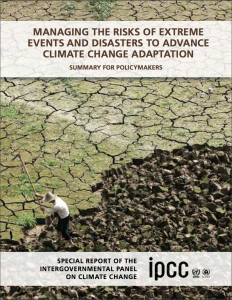 As we celebrated the New Year last night in Barcelona the wind started to pick up due to a storm that the Spanish Meteorological Agency (AEMET) called Carmen. Carmen was, after Ana and Bruno, the third such storm, borrasca in Spanish to hit since the Agency, together with its counterparts in France and Portugal, decided to start naming such storms last month.
As we celebrated the New Year last night in Barcelona the wind started to pick up due to a storm that the Spanish Meteorological Agency (AEMET) called Carmen. Carmen was, after Ana and Bruno, the third such storm, borrasca in Spanish to hit since the Agency, together with its counterparts in France and Portugal, decided to start naming such storms last month.
Ireland and England started naming storms in November, 2015 and the United States has been naming hurricanes since 1953. The names of hurricanes and tropical storms are actually coordinated by the World Meteorological Organization’s Tropical Cyclone Program which was put together in the 1970’s.
It has been found that the general public prepares better for storms with names and it is easier to keep track of different storms and make reference to them, etc. The fact that European governments have decided to start naming the storms in the North Atlantic may be a sign that climate change is not only real but that we are already feeling its effects.
More Storms ?
In September of 2017 Florida and the Caribbean were battered by three hurricanes which appear to be linked to climate change and in another post, I wrote about the apparent link between slightly warmer temperatures and more significant storms.
In Europe, the European Environment Agency maintains that there is too much variability over the last century to confirm any long term trends but that climate change projects do show an increase in severe storms in the Fall and Winter across Europe. One problem is that there is not enough confidence in the data to be sure of what actually happend over the last 200 years and so the “robustness” of the apparently alarming trend line can be challenged.
More Damage ?
In December, Ana caused hundreds of flights to be cancelled and was reportedly responsible for one death in Portugal. What is apparently beyond a doubt is that storms are causing more disruption and damage to our modern society regardless of the whether they are have already started to get more intense. This is due to the increasingly complex nature of society as well as the location of expensive and well developed real estate on the coast.
What are the Facts?
 The problem with modeling the weather in general and storms in particular is that they are stochastic in nature or “having a random probability distribution or pattern that may be analyzed statistically but may not be predicted precisely” according to Google’s dictionary. The Intergovernmental Panel on Climate Change calls major storms “extreme weather events” but the language it uses to discuss the issue is couched in scientific and political language which leaves room for interpretation. According to the IPCC the causes of extreme events or singularities “are diverse, but most can be grouped in the categories of nonlinearity, complexity, and stochasticity”.
The problem with modeling the weather in general and storms in particular is that they are stochastic in nature or “having a random probability distribution or pattern that may be analyzed statistically but may not be predicted precisely” according to Google’s dictionary. The Intergovernmental Panel on Climate Change calls major storms “extreme weather events” but the language it uses to discuss the issue is couched in scientific and political language which leaves room for interpretation. According to the IPCC the causes of extreme events or singularities “are diverse, but most can be grouped in the categories of nonlinearity, complexity, and stochasticity”.
After reading the different summaries and reports, my understanding is that storms will probably get more severe and less frequent but that it is hard to tell whether this trend has already started form the data we have. In any case, the fact that governments are now naming european storms seems to me that we need to increase our preparedness and resilience.

